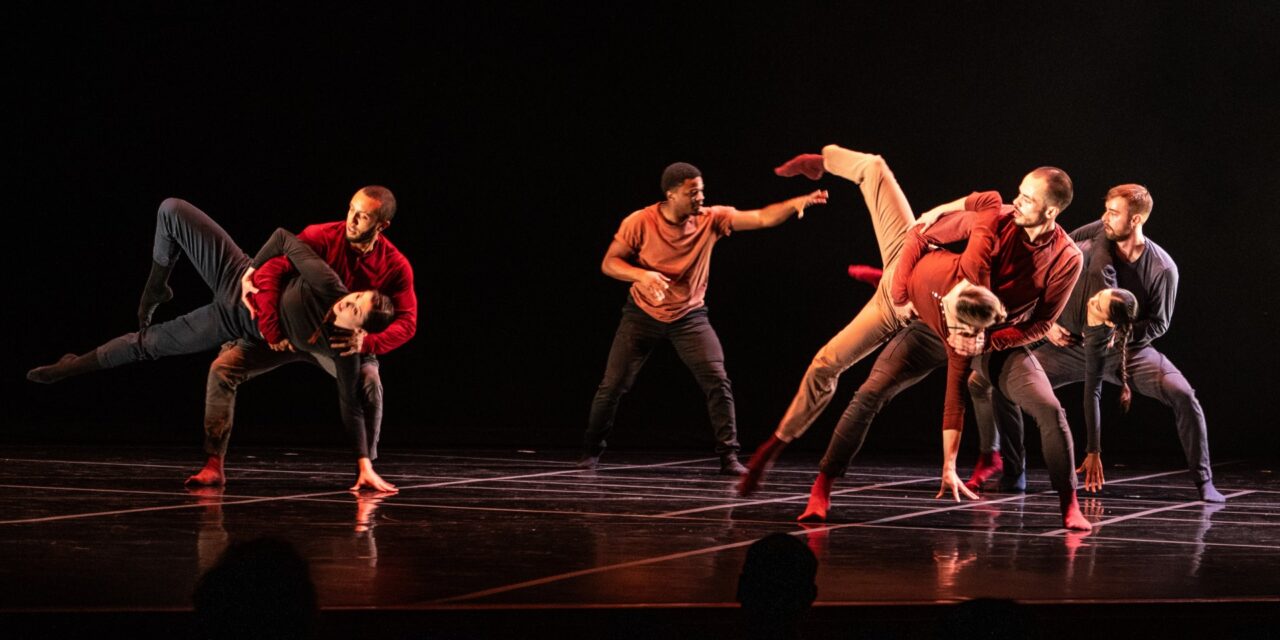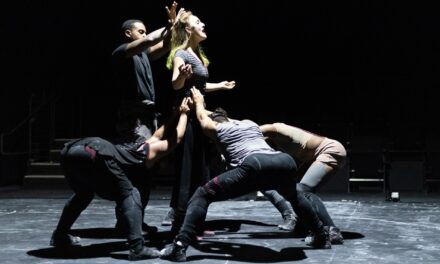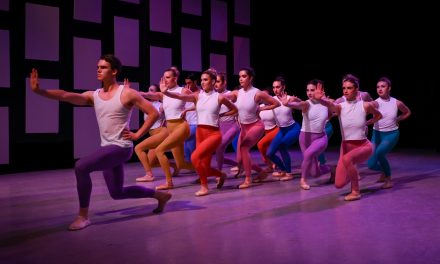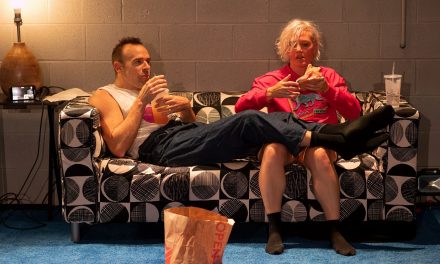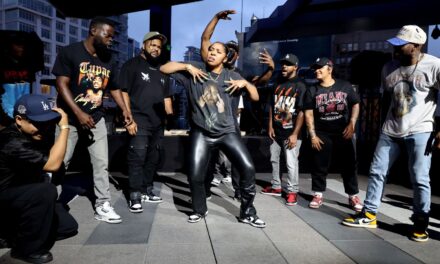On the afternoon of March 9th, 2025 I had the privilege of attending RUBBERBAND Dance’s showing of Second Chances at the BroadStage in Santa Monica. The performance was a homecoming of sorts for Victor Quijada, the director and choreographer of the Montreal based dance company. Quijada was originally born in Los Angeles, California and it was made clear throughout the performance how integral his upbringing here is infiltrated into his choreographic choices both theatrically and physically.
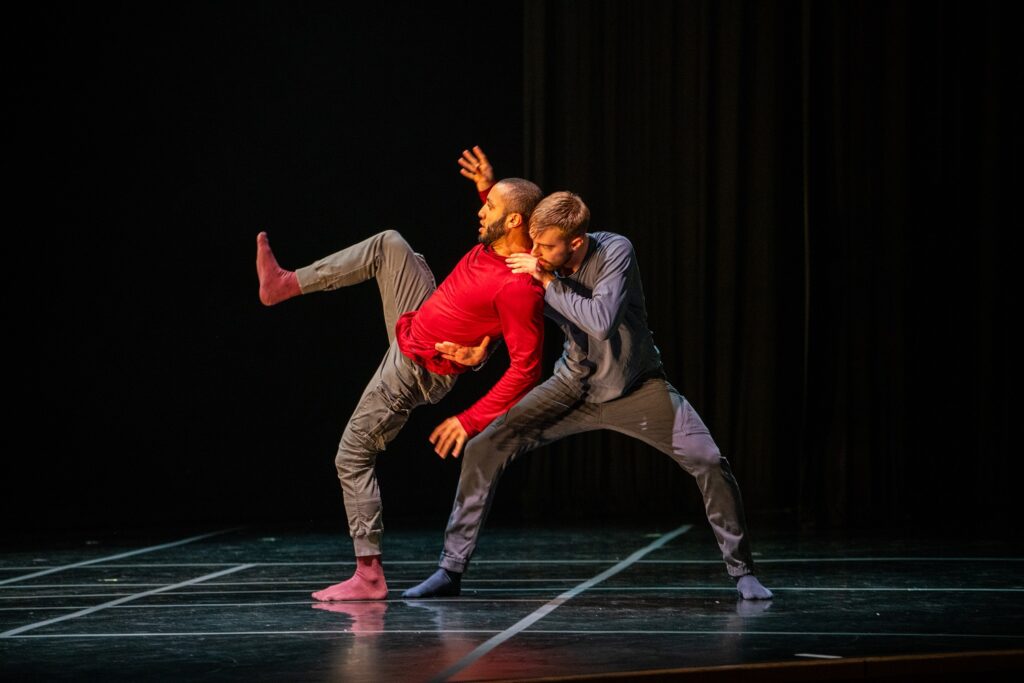
RUBBERBAND – Jovick Pavajeau-Orostegui and Wyeth Walker in “Second Chances” by Victor Quijada – Photo by Sea Sloat.
RUBBERBAND Dance is unique as it is an authentic fusion of break dancing, ballet, contemporary, and postmodern elements, all significant in Quijada’s background and dance training. Quijada coined this fusion and technique as the RUBBERBAND Method, a method that I personally had the privilege of studying under Quijada four years ago in Berlin. The method, beautifully executed by the dancers, Rion Taylor, Jovick Pavajeau-Orostegui, Wyeth Walker, Dareon Blowe, Emma-Lynn Mackay-Ronacher, and Cindy Mateus was clear in its execution. Rooted, efficient, seamless, and athletic are just a few ways to describe the method and the qualities presented by the dancers.
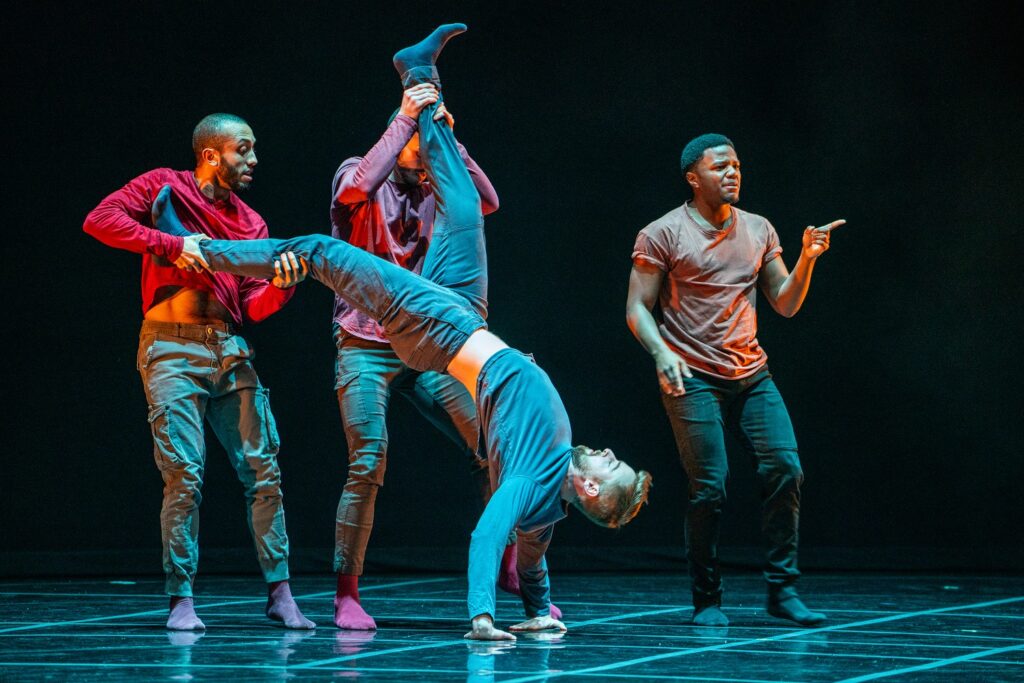
RUBBERBAND – Jovick Pavajeau-Orostegui, Rion Taylor, Wyeth Walker, Dareon Blowe in “Second Chances” by Victor Quijada – Photo by Sea Sloat.
Second Chances is a show in two acts, with the first act titled Commissions Suite, a reconstruction of two works that were originally choreographed for Hubbard Street Dance Chicago and Scottish Dance Theater, hence the witty and quite literal title for the work. Performed to sound by Jasper Gahunia, the first work was a stellar example of the ensembles physical and theatrical abilities as they navigated unison sections, duets, and solos with momentous abandon that was backed up with a clear control. At times, when I have seen dancers perform elements of breakdancing within or outside of a concert dance setting, I have felt a sense of uneasiness as the risk factor did not seem supported by a clear anatomical understanding or strength. It is a testament to Quijada’s RUBBERBAND Method that within the ‘risky’ elements of breaking, the dancers did not leave me with an anxious sigh of relief. Instead, I felt an ease and confidence in their approach to the movement which allowed me to focus on and appreciate the choreographic design and significance of the work. I enjoyed Quijada’s theatrical choices throughout the first act, ones that used spoken word and breaking the fourth wall to communicate with the audience and even the stage technicians. The dancers navigated those choices effortlessly and left me curious as to what was to come in the next act.
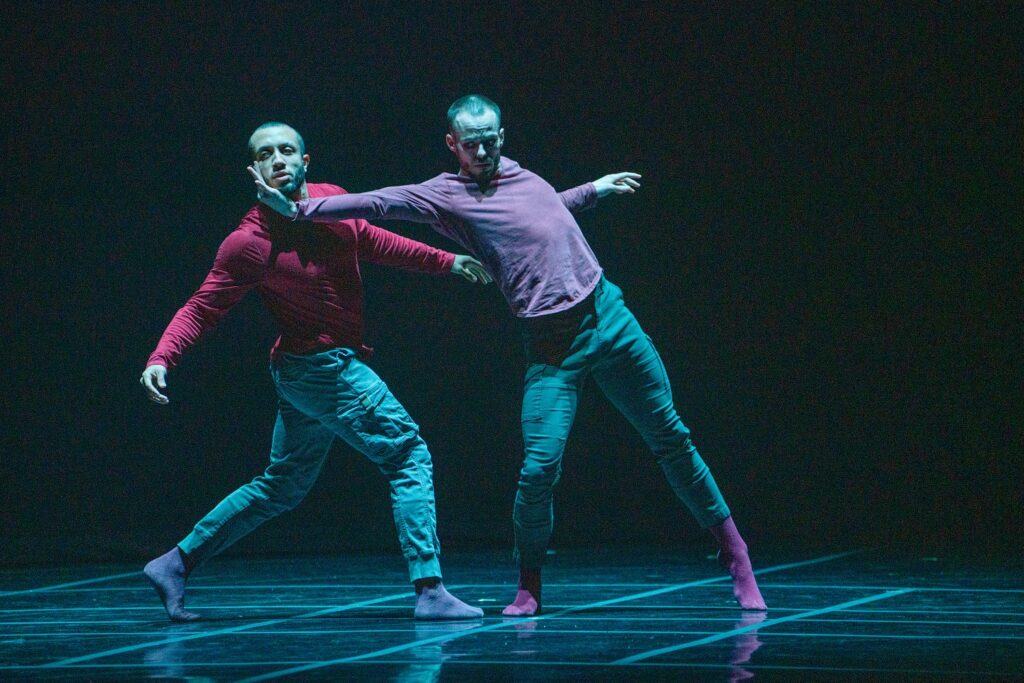
RUBBERBAND – Jovick Pavajeau-Orostegui and Wyeth Walker in “Second Chances” by Victor Quijada – Photo by Sea Sloat.
The second act, titled Trenzado, was a powerful and personal piece created by Quijada. The stage had been redesigned with wooden structures standing array in the space, the tone immediately felt different. Although this felt quite disjointed and unrelated from the first act, I was quickly drawn into the intensity of the piece. It was exciting to see that Quijada himself had joined the dancers in performing in this half of the show, he opened the act in a dim spotlight center stage, moving along the floor with soft edges and a captivating presence. It quickly made sense why Quijada made the decision to perform in this work as he walked to a microphone and began telling his story or moreover, his family’s story. This specific use of spoken word drew me in differently than it had been used before. Quijada spoke of his memories visiting Mexico as a child, his relationship with being Mexican American, and the parallels of his search for a greater life in relation to his parents’ journey. The dancers slowly join the stage as Quijada is explaining what the field workers looked like as his family drove through the desert. Dressed in layered work clothes, the performers mimic picking crops and weathering the heat and labor of their work. There is a poignant moment when Quijada joins the dancers in movement where the wooden structures are shifted to represent a border. The performers are taking turns carrying one another, struggling to find their way to the threshold. This moment brought me to tears as the struggle escalates, only Quijada is able to thrust himself through the wooden border, leaving the others unable to move forward. The work made me question the idea of borders and boundaries, how these man-made lines have driven families apart, started wars, and are enough reason for some to harbor hate or misunderstanding in one’s heart.
The soundtrack for Trenzado was created by composer Jasper Gahunia sampling traditional Mexican norteño music (corridos and ranchera.)
Trenzado is more than just a dance performance, it is a powerful piece of political performance art. It is a statement of resistance and a declaration of unity. I applaud RUBBERBAND Dance for their honesty and commitment to the work in its physical and emotional entirety. Second Chances is what I believe to be one of Victor Quijada’s most important pieces yet and was a performance I still think about days later.
For more information about RUBBERBAND Dance, please visit their website.
For more information about BroadStage, please visit their website.
Written by Rebecca Lee for LA Dance Chronicle.
Featured image: RUBBERBAND – Jovick Pavajeau-Orostegui, Cindy Mateus, Dareon Blowe, Emma-Lynn Mackay-Ronacher, Rion Taylor, Jessica Muszynski, Wyeth Walker in Second Chances – Photo by Sea Sloat.

